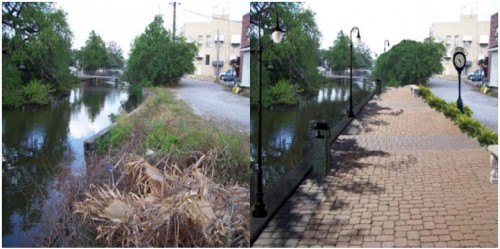November Dance
November 20, 2006
Bayou Walk gets mixed reviews
November 22, 2006A reader sent me the following Thanksgiving story: As Thanksgiving Day was drawing near, a first grade teacher gave her class an assignment to draw a picture of something for which they were thankful. Most of the class would probably be considered economically disadvantaged, but still many would celebrate the holiday with turkey and other traditional Thanksgiving goodies. These, the teacher thought, would be the subjects of most of her students’ art. She was correct in her assumption.
However, Douglas drew a different kind of picture. Douglas was a different kind of child. He was frail and unhappy and depended on the teacher for moral support. As other children played at recess, Douglas would stand close by the teacher’s side. One could only image the pain and insecurity Douglas felt behind those sad eyes.
Yes, his picture was different. When asked to draw a picture of something for which he was thankful, he drew a hand. Nothing else, just an empty hand. His abstract image captured the imagination of his peers. Whose hand could it be? One child guessed it was the hand of a farmer because farmers raise turkeys. Another suggested a police officer because the police protect and care for people. Still others guessed it was the hand of God for God feeds and blesses us.
When the children had gone on to other assignments, the teacher paused at Douglas’ desk, bent down, and asked him whose hand it was. The little boy looked away and murmured, “It’s your hand, teacher.”
She recalled the times she had taken his hand and walked with him to various places as she had done for the other students. How often had she said, “Take my hand, Douglas, we’ll go outside.” Or, “Let me show you how to hold your pencil.” Or, “Let’s do this together.” Douglas was most thankful for his teacher’s hand.
Brushing aside a tear, she continued her work. The story speaks of more than thankfulness. It says something about teachers teaching and parents parenting and friends showing friendship, and how much it means to the Douglases of the world. They might not always say thanks. Nevertheless, they will remember the hand that reaches out to them.
Some of the great philosophers of the world tried to teach us how to be thankful. Cicero, born about a century before Jesus, viewed thankfulness to society and to the universe as a virtuous emotion that would counter arrogance and pride and allow a person to develop high ethical standards: “Gratitude is not only the greatest of virtues, but the parent of all others,” he said. By the 18th century, the free-market thinker Adam Smith, in his Theory of Moral Sentiments, supposed that people who did not feel gratitude were only cheating themselves out of happiness in life. In the 19th century, Immanuel Kant described ingratitude as “the essence of vileness.”
Closer to the present, the pioneering psychologist Abraham Maslow, who in the 1960’s developed the academic theory of self-actualization, which holds that human beings satisfy their needs in stages, beginning with physical and gradually rising to more spiritual needs. Before his death in 1970, Maslow wrote that he despaired of the lack of gratitude he saw in society. “People’s lives were getting better,” Maslow wrote, “and yet most seemed to be taking their blessings for granted.”
In celebrating Thanksgiving each year we should all realize with St. James that “Every generous act of giving, with every perfect gift, is from above, coming down from the Father of lights.” (James 1:17) I am most thankful to God for my family and friends who support me and are there for me. I also thank God for you. Have a very Happy Thanksgiving!




